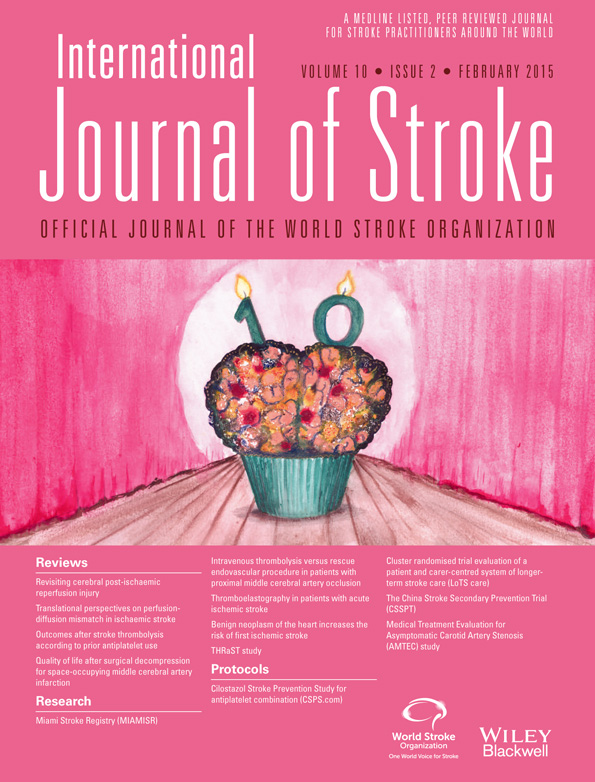Predictive impact of daily physical activity on new vascular events in patients with mild ischemic stroke
Abstract
Background
Daily physical inactivity is associated with a substantially increased risk of cardiovascular events. However, the target level of daily physical activity remains unclear.
Aim
We aimed to evaluate the impact of physical activity on long-term vascular events in patients with mild ischemic stroke.
Methods
We designed a single hospital-based prospective observational study and studied 166 ischemic stroke patients (mean age: 63·9 ± 9·2) who had a modified Rankin Scale 0–1. We measured the daily step count as a variable of the daily physical activity after three-months from the stroke onset. Other clinical characteristics including age, body mass index, blood pressure, blood laboratory tests, vascular function and medications were also assessed. The primary outcomes were hospitalization due to stroke recurrence, myocardial infarction, angina pectoris and peripheral artery disease. Survival curves were calculated by a Kaplan–Meier survival analysis, and the hazard ratios for recurrences were determined by univariate and multivariate Cox proportional hazards regression models.
Results
After a median follow-up periods of 1332 days, 34 vascular events (23 stroke recurrences, 11 coronary artery disease) and 7 drop-outs occurred, and the remaining patients were divided into two groups: the without recurrence group (n = 125) and the with recurrence group (n = 34). The daily step count was lower in the nonsurvivor group than in the survivor group. Univariate and multivariate Cox proportional hazards analyses revealed that the daily step counts was independent predictors of new vascular events. A daily step count cutoff value of 6025 steps per day was determined by analyzing the receiver-operating characteristics that showed a sensitivity of 69·4% and a specificity of 79·4%. The Kaplan–Meier survival curves after a log-rank test showed a significantly lower event rate in the more than 6025 steps per day group compared with the less than 6025 steps per day group (P = 0·0002). The positive and negative predictive values of less than 6025 steps were 38·0% and 91·6%, respectively.
Conclusion
Our data indicate that daily physical activity evaluated by step counts may be useful for forecasting the prognosis in patients with mild ischemic stroke. Daily step counts of approximately 6000 steps per day may be an initial target level for reducing new vascular events.




